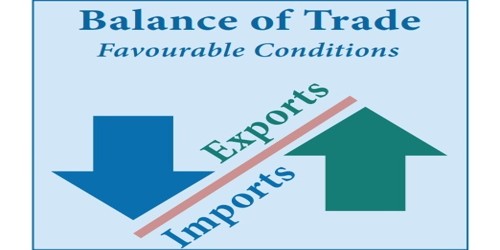
As individuals approach retirement, the primary objective becomes ensuring that they have sufficient income to support their desired lifestyle. Many retirees face the challenge of balancing the need for growth—which can protect against inflation and longevity risks—with the need for safety and stability in their investment portfolio. One effective approach to addressing this challenge is the bucket strategy. This strategy segments retirement assets into various "buckets" based on time horizons, risk levels, and withdrawal needs.
1. Understanding the Bucket Strategy
1.1 What is the Bucket Strategy?
The bucket strategy is an investment approach designed for retirees to manage their assets by dividing them into different "buckets" based on when the funds will be needed. Each bucket is allocated a specific purpose and is invested according to appropriate risk levels and growth objectives. The strategy helps retirees plan for both short-term cash flow needs and long-term growth potential.
1.2 Why Use the Bucket Strategy?
The bucket strategy provides a clear framework for managing retirement assets, allowing retirees to:
- Separate funds according to time horizons and risk levels, ensuring that immediate needs are met without having to sell long-term investments at an inopportune time.
- Reduce anxiety about market fluctuations, as each bucket addresses specific financial goals.
- Maintain a balanced approach to growth and safety, optimizing the potential for returns while protecting against downside risk.
2. The Three Buckets Explained

The bucket strategy typically involves creating three separate buckets to address different needs throughout retirement.
2.1 Bucket One: Short-Term Needs
The first bucket is designated for short-term needs, typically covering the first three to five years of retirement expenses. This bucket should consist of safe and liquid assets, ensuring that retirees have immediate access to funds without taking on market risk.
Key Features of Bucket One:
- Time Horizon: 0 to 5 years
- Purpose: Cover living expenses and essential costs
- Investment Types: Cash, money market accounts, short-term bonds, and certificates of deposit (CDs)
2.2 Bucket Two: Intermediate Needs
The second bucket is designed for intermediate needs and typically covers expenses from years five to ten of retirement. This bucket can take on slightly more risk than the first bucket, with a focus on achieving moderate growth to help bridge the gap between short-term needs and long-term growth.
Key Features of Bucket Two:
- Time Horizon: 5 to 10 years
- Purpose: Cover expenses during the mid-retirement phase
- Investment Types: A mix of conservative stocks, bond funds, balanced funds, and other moderate-risk investments
2.3 Bucket Three: Long-Term Growth
The third bucket is intended for long-term growth and is designed to support retirees in the later years of retirement. This bucket can afford to take on more risk, as its assets are not needed for several years, allowing for potential higher returns through equity market exposure.
Key Features of Bucket Three:
- Time Horizon: 10 years or more
- Purpose: Provide growth and protect against inflation
- Investment Types: Stocks, equity index funds, and other growth-oriented investments
3. Benefits of the Bucket Strategy
Implementing the bucket strategy offers numerous advantages, making it an attractive option for retirees.
3.1 Flexibility in Withdrawals
The bucket strategy provides flexibility in how and when to withdraw funds. Since different buckets serve distinct purposes, retirees can strategically withdraw from the necessary bucket without impacting their long-term investments. This flexibility can help retirees manage cash flow while minimizing taxable events.
3.2 Reduced Market Volatility Impact
By separating assets into different buckets based on risk levels and time frames, retirees can reduce the impact of market volatility on their overall portfolio. For example, the first bucket remains insulated from market fluctuations, ensuring that retirees still have access to necessary funds during market downturns without being forced to sell investments at a loss.
3.3 Psychological Comfort
Retirement can be stressful, and the bucket strategy helps alleviate some of that stress by providing a clear and organized plan. Knowing that short-term needs are covered while still pursuing growth for long-term needs can create peace of mind for retirees, helping them focus on enjoying their retirement.
4. Crafting Your Bucket Strategy

Creating a bucket strategy involves several steps, starting with an assessment of your financial situation.
4.1 Assessing Your Financial Situation
Begin your planning by taking stock of your current financial situation. Consider the following:
- Total retirement savings, including 401(k) accounts, IRAs, and personal savings
- Sources of guaranteed income, such as pensions and Social Security
- Expected retirement expenses and desired lifestyle
4.2 Determining Your Income Needs
Calculate your expected income needs in retirement, taking into account factors such as:
- Essential living expenses (housing, utilities, groceries, healthcare)
- Discretionary spending (travel, hobbies, entertainment)
- Any unforeseen expenses (emergencies or medical issues)
Understanding your income needs will help you allocate assets appropriately across the three buckets.
4.3 Allocating Assets to Each Bucket
Once you have a clear understanding of your financial situation and needs, determine how to allocate your assets across the three buckets. Consider the following guidelines:
- Bucket One should contain assets sufficient to cover your short-term needs without risk of loss.
- Bucket Two should have a moderate allocation to investments, balancing growth with stability.
- Bucket Three should be primarily focused on growth to protect against inflation and provide for later phases of retirement.
5. Investment Options for Each Bucket
Selecting the right investment options for each bucket is critical to the success of your retirement plan.
5.1 Choosing Investments for Bucket One
For Bucket One, focus on safe, highly liquid investments that ensure capital preservation. Some suitable options include:
- Cash and Cash Equivalents: Savings accounts, money market accounts, or short-term CD accounts provide readily accessible funds without risk.
- Short-Term Bonds: Treasury bills or short-term bond funds can generate modest interest while minimizing risk exposure.
- Inflation-Protected Securities: Consider Treasury Inflation-Protected Securities (TIPS) for hedging against inflation.
5.2 Choosing Investments for Bucket Two
In Bucket Two, you can introduce a moderate level of risk to achieve growth while still prioritizing capital preservation. Consider these options:
- Bond Funds: A mix of government and corporate bond funds can provide income while maintaining a focus on stability.
- Balanced Funds: These mutual funds typically invest in both stocks and bonds, offering diversification and a balanced risk profile.
- Conservative Stock Investments: Blue-chip stocks or dividend-paying stocks can provide moderate growth potential with lower volatility.
5.3 Choosing Investments for Bucket Three
Bucket Three should be designed for long-term growth, allowing for aggressive investments. Suitable options may include:
- Stock Investments: Focus on growth-oriented stocks or equity index funds to achieve capital appreciation over time.
- Exchange-Traded Funds (ETFs): Consider sector-specific or growth-focused ETFs to gain exposure to specific market segments.
- Global Investments: Diversifying into international stocks can provide additional growth opportunities and reduce domestic concentration risks.
6. Adjusting Your Bucket Strategy Over Time

Your bucket strategy needs regular monitoring and adjustments to align with changes in your financial situation, market conditions, and personal preferences.
6.1 Monitoring and Rebalancing
Schedule regular reviews of your buckets, evaluating performance and assessing whether the current allocations continue to meet your needs. Rebalancing may be necessary if investment performance skews the original allocation or if your financial situation changes.
- If one bucket significantly outperforms, you may want to rebalance by shifting gains to another bucket to maintain your target asset allocation.
- Adjust your withdrawals from one bucket to mitigate the risk of depleting any one bucket too quickly.
6.2 Adapting to Changing Circumstances
Your retirement needs and lifestyle may change due to unforeseen circumstances, such as health issues, changes in living arrangements, or market fluctuations. Be prepared to adapt your strategy:
- If you experience increased expenses, you may need to adjust withdrawals or shift investments between buckets.
- If market conditions fluctuate significantly, reassess your risk tolerance and make necessary adjustments to investment allocations.
7. FAQs About the Bucket Strategy
7.1 What are the common misconceptions?
A common misconception is that the bucket strategy is only for conservative investors. In reality, the strategy can be tailored to meet various risk tolerances, allowing aggressive growth while maintaining liquidity for short-term needs.
7.2 How does the bucket strategy compare to traditional withdrawal strategies?
Unlike traditional withdrawal strategies that often involve withdrawing a fixed percentage from a single portfolio, the bucket strategy provides intentional organization and structure. It separates funds by purpose, reducing market risk in the short term while still aiming for long-term growth.
7.3 Can I use the bucket strategy with annuities?
Yes, the bucket strategy can be integrated with annuities. For example, some retirees use annuities in their long-term growth bucket to provide guaranteed income, while using other assets for short-term and intermediate needs.
8. Conclusion
The bucket strategy offers retirees a structured approach to managing their portfolio that prioritizes both growth and safety. By dividing assets into three distinct buckets based on time horizons and risk levels, retirees can create a comprehensive plan that addresses both immediate financial needs and long-term goals.
As retirement approaches, taking the time to craft a tailored bucket strategy can make all the difference in achieving financial security and peace of mind. With the right planning, monitoring, and adjustments over time, you can enjoy a comfortable and fulfilling retirement while balancing growth and safety in your portfolio.








